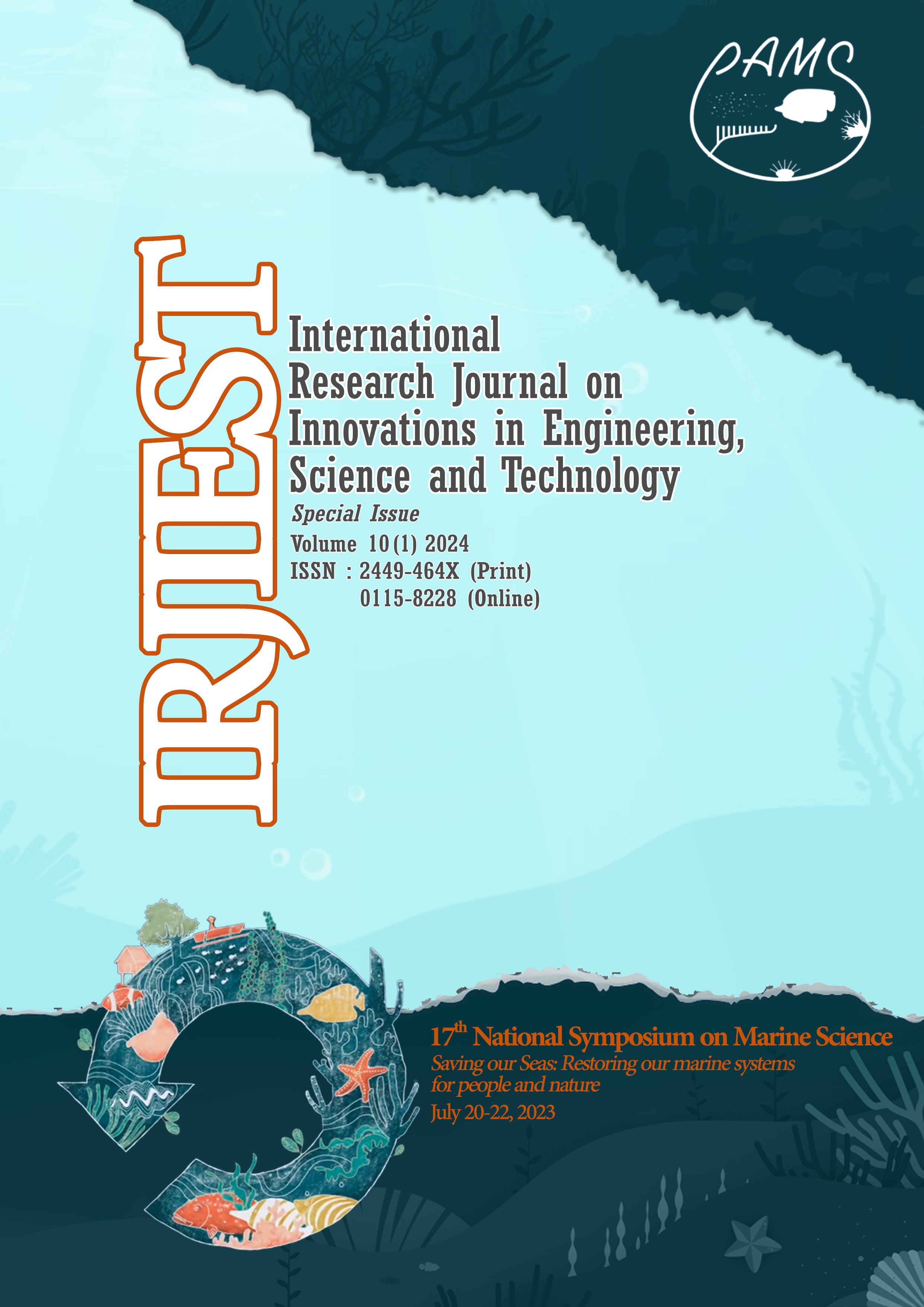Microplastic contamination in seaweed along Verde Island Passage: Implications for marine biodiversity and ecosystem health
Keywords:
contamination, macroalgae, marine ecosystem, microplastics, seaweedsAbstract
Microplastics are one of the global threats to marine ecosystems. Numerous studies have confirmed their presence and their implications in aquatic organisms. However, studies on microplastic contamination in seaweeds are very scarce, especially in the Philippines. In this study, the researchers aim to determine the presence of microplastics in Caulerpa chemnitzia var. turbinata locally known as “Lato” or “Ar-arusip” in the country. The researchers collected 6 kg of wet-weight of C. chemnitzia var. turbinata on the west coast of Calatagan, Batangas, along the Verde Island Passage marine corridor through random sampling. A total of 113 pcs of microplastics were detected under a stereomicroscope and compound microscope. The researchers identified and classified microplastics according to their size, shape, and color. The most abundant type of microplastic is fiber (84.07%), while the least kind of microplastic is film (6.19%). These 16 pcs of microplastics are probably degraded from textiles, plastic containers, and plastic bags transported through air, wastewater, and water currents. Furthermore, the ceaseless use and disposal of microplastics result in lethal and devastating impacts on marine biodiversity. This study calls for effective policies and management to mitigate the impact of microplastics on the marine environment.
Downloads
Published
How to Cite
Issue
Section
License
Copyright (c) 2025 International Research Journal on Innovations in Engineering, Science and Technology

This work is licensed under a Creative Commons Attribution-NonCommercial-NoDerivatives 4.0 International License.

